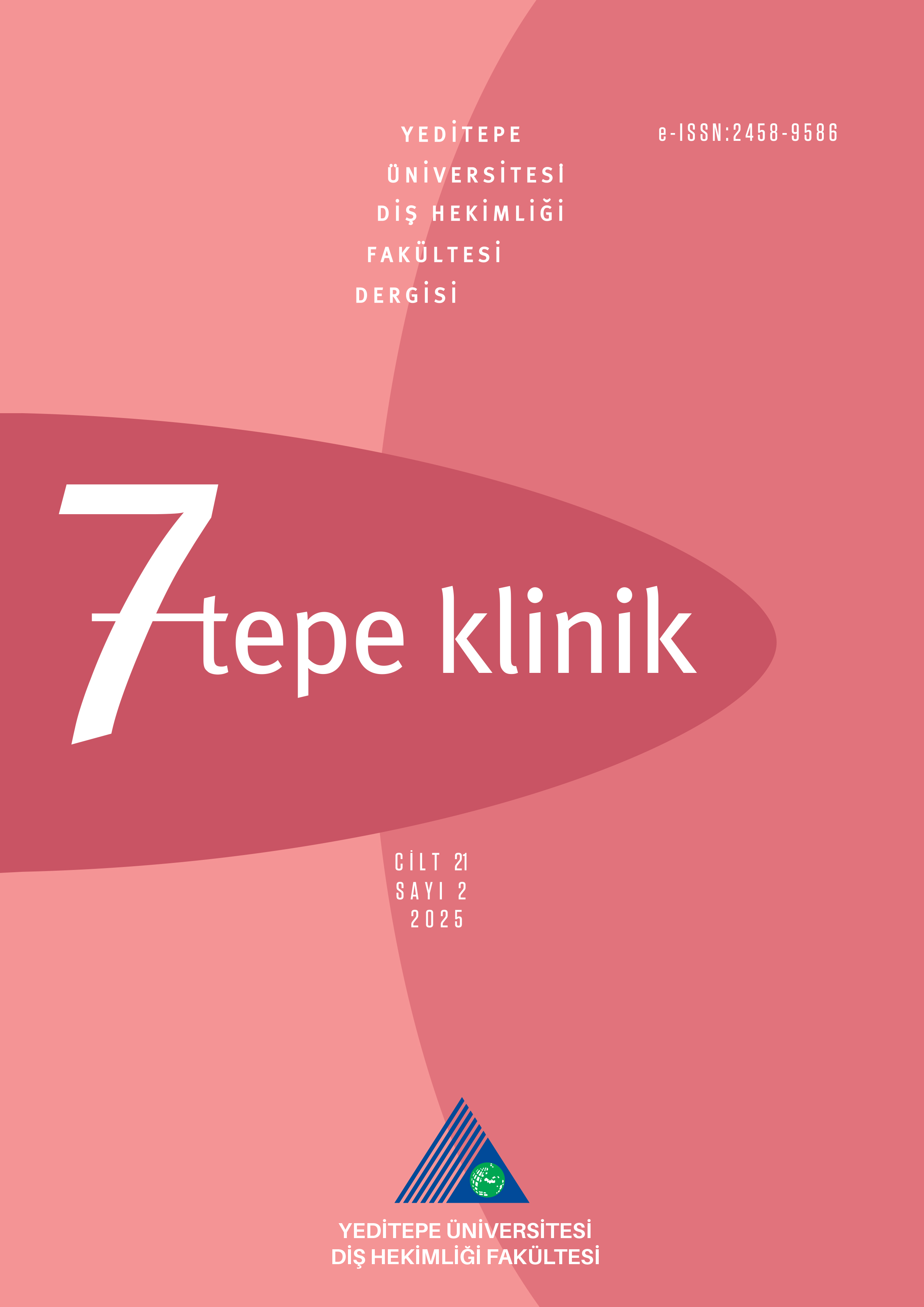Farklı ışık kaynaklarının kütlesel yerleştirilebilen kompozit rezinlerin konversiyon derecelerine etkileri
Aynur Yıldız1, Alper Kaptan21Tekirdağ Ağız ve Diş Sağlığı Hastanesi, Tekirdağ2Cumhuriyet Üniversitesi, Diş Hekimliği Fakültesi, Restoratif Diş Tedavisi A.D., Sivas
GİRİŞ ve AMAÇ: Çalışmamızın amacı; farklı ışık kaynaklarının ve farklı ışık uygulama sürelerinin, bulk fill kompozit rezinler ve tabakalı yerleştirilen geleneksel kompozit rezinin polimerizasyon derecelerine etkilerini FTIR-ATR ölçümü ile incelemektir.
YÖNTEM ve GEREÇLER: Kütlesel yerleştirilebilen 4 farklı bulk fill kompozit (Filtek Bulk fill (3M ESPE), SDR (Dentsply), Tetric Evo Ceram Bulk fill (Vivadent), Venus Bulk fill (Heraeus)) ve bir adet kondanse edilebilen kompozit (Filtek Z250 (3M ESPE)) kullanıldı. 5 mm çapında ve 4 mm yüksekliğinde kompozit örnekler hazırlandı. Kompozit materyallerin polimerize edilmesinde üç farklı LED ışık kaynağı (Elipar S10, Elipar Deepcure-S ve Valo Cordless) üç farklı uygulama süresi (20s, 30s, 40s) ile kullanıldı. Kompozit örneklerinin konversiyon derecelerinin ölçümleri FTIR spektroskopi (Perkin Elmer Spectrum One, MA, ABD) ile yapıldı.
BULGULAR: İstatistiksel değerlendirmede kontrol grubu olan Filtek Z250ye ait örneklerin konversiyon derecesi değerleri, diğer 4 gruba kıyasla anlamlı olarak yüksek bulundu (P=0.018). Işık cihazlarının konversiyon dereceleri sıra ortalamaları Valo> Elipar Deepcure-S> Elipar S10 olarak bulunurken aralarında anlamlı bir farklılık bulunmadı (P=0.465). Işık uygulama sürelerine göre konversiyon dereceleri arasında anlamlı bir farklılık bulunmadı.
TARTIŞMA ve SONUÇ: Geleneksel kompozit grubunun en yüksek değerleri göstermesiyle beraber tüm bulk fill kompozit grupları her uygulama süresinde yeterli konversiyon derecesi değerleri göstermiştir. Yeni nesil LED ışık cihazları kısaltılmış uygulama süreleri ile de yeterli konversiyon derecesi değerleri sağladığı için avantajlıdır.
The effects of degree of conversion of various bulk fill composite resins with different light sources
Aynur Yıldız1, Alper Kaptan21Tekirdağ Oral And Dental Health Hospital, Tekirdağ, Turkey2Department Of Restorative Dentistry, Faculty Of Dentistry, Cumhuriyet University, Sivas, Turkey
INTRODUCTION: This study aims to evaluate the effects of different light sources and curing times on the degree of conversion of bulk fill composite resins and a conventional composite resin.
METHODS: Four different bulk fill composites (Filtek Bulk fill (3M ESPE), SDR (Dentsply), Tetric Evo Ceram Bulk fill (Vivadent), Venus Bulk fill (Heraeus) and one condensable composite (Filtek Z250 (3MESPE)) resin were used. Composite samples were prepared 5 mm in diameter and 4 mm in height. The prepared composite materials are polymerized with three different LED light sources (Elipar S10, Elipar Deepcure- S and Valo Cordless) with three different application periods (20s, 30s, 40s). Measurement of degree of conversion of composite samples were performed with FTIR spectroscopy (Perkin Elmer Spectrum One, MA, ABD).
RESULTS: According to the statistical results, values of the control group Filtek Z250 were significantly higher than the other groups (P=0.018). There was no significant difference between the degree of conversion ratings of light devices in the order of Valo> Elipar Deepcure-S> Elipar S10 (P=0.465). There was no significant difference between the conversion ratios of the light application periods.
DISCUSSION AND CONCLUSION: Although the conventional layered composite group showed the highest values, all bulk fill composite groups showed adequate degree of conversion values in each application durations. The new generation LED light sources are also advantageous because they provide adequate degree of conversion values with abbreviated application times.
Makale Dili: Türkçe



